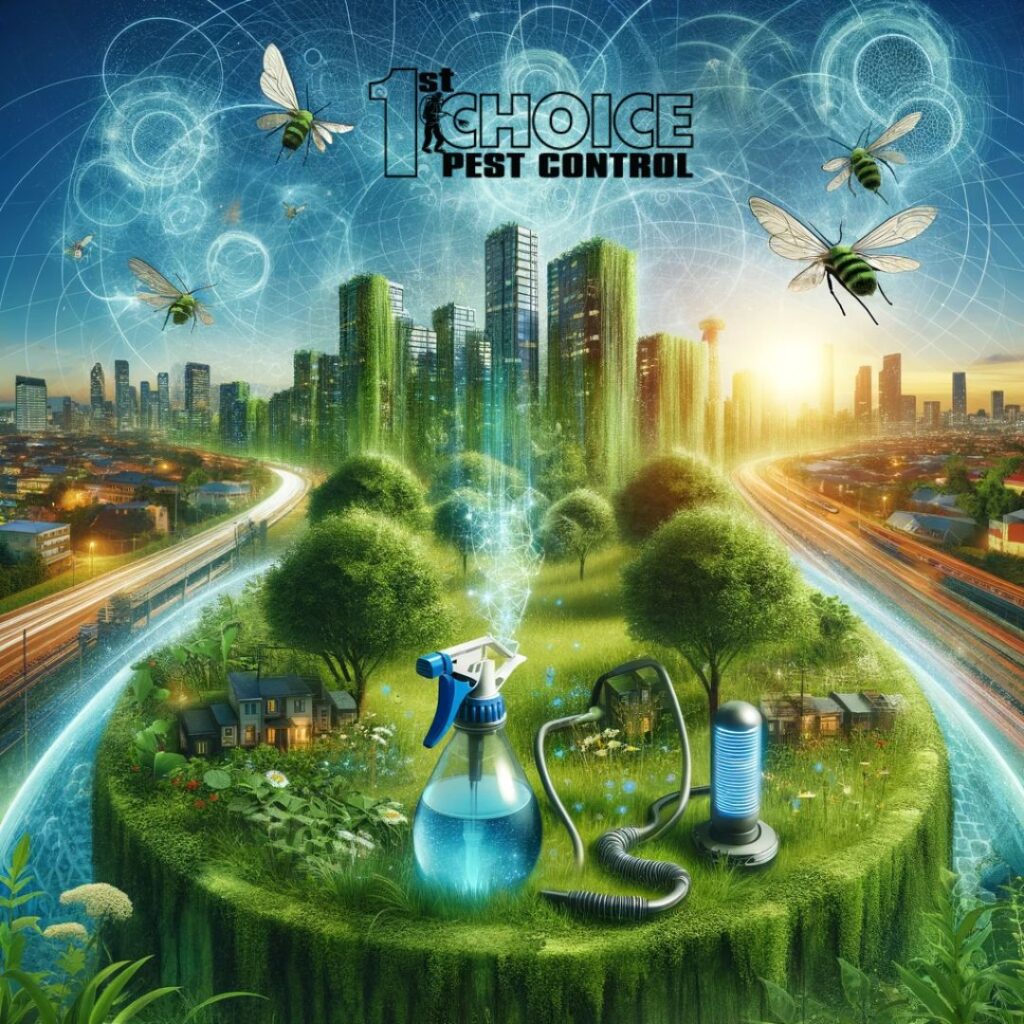Eco-Friendly and Innovative Strategies: Shaping the Future of Pest Control
The traditional approach to pest control has largely centered around the use of chemical pesticides, a method that has been both effective and prevalent for decades. These conventional methods, while often successful in eliminating unwanted pests, have raised significant concerns over their long-term environmental impact and potential health risks to humans and animals. As our understanding of these implications deepens, the pest control industry is at a pivotal point, where the need for eco-friendly and innovative approaches is becoming increasingly apparent. This shift is not just a matter of compliance with evolving regulations or catering to market demand, but a crucial step towards sustainable practices. In this blog, we will explore the emerging trends in pest control that focus on environmental sustainability and innovation, highlighting why these new methods are not just beneficial, but necessary for a healthier, safer future.
The trend towards eco-friendly pest control reflects a growing consciousness about the environmental and health impacts of traditional methods. This shift is driven not only by consumer preferences but also by a broader societal acknowledgment of the need for sustainable practices. Eco-friendly pest control methods offer significant benefits for both health and the environment. They typically involve less toxic substances, reducing potential harm to non-target species including humans, pets, and beneficial insects. Moreover, these methods align with a growing demand for environmentally responsible practices, paving the way for a more sustainable approach to managing pests that is as concerned with ecological balance as it is with effective pest control.
Biopesticides: A Natural Alternative
Biopesticides represent a pivotal shift in pest control methodologies, offering a greener and more targeted approach compared to traditional chemical pesticides. These are derived from natural sources such as plants, bacteria, fungi, and certain minerals, and are designed to control pests while causing minimal harm to other organisms and the environment.
One of the key advantages of biopesticides is their specificity. They often target specific pests, which reduces collateral damage to beneficial insects and minimizes ecological disruption. This specificity also plays a crucial role in preventing the development of resistance among pest populations, a significant issue with conventional pesticides.
Furthermore, biopesticides generally have a lower environmental persistence. They degrade more rapidly in the environment, reducing the risk of long-term ecological impacts, such as soil and water contamination. This property makes them a safer option for use in sensitive areas like watersheds, schoolyards, and urban settings.
Their impact, however, is not just limited to their environmental friendliness. Studies have shown that biopesticides can be highly effective, often requiring lower quantities to achieve results comparable to chemical pesticides. This effectiveness, combined with their lower toxicity, makes biopesticides an increasingly popular choice for both agricultural and residential pest control.
Despite these benefits, biopesticides are not without their challenges. They often require more precise application conditions and may have a narrower window of effectiveness compared to their chemical counterparts. Nonetheless, the potential of biopesticides in shaping a more sustainable future in pest control is undeniable, offering a balance between effectiveness and environmental stewardship.
Technological Innovations in Pest Control
The pest control industry is experiencing a technological revolution, marked by the introduction of advanced tools and methods that are transforming traditional practices. One such innovation is the advent of ultrasonic pest repellers, devices that use high-frequency sound waves to deter pests. These sound waves are inaudible to humans and most pets, making them a non-toxic and non-invasive pest control solution.
Another technological advancement is the use of digital monitoring systems. These systems enable precise tracking of pest activity, allowing for more targeted and effective control measures. Smart traps are also gaining popularity; equipped with sensors, they can capture pests and instantly relay data to pest control professionals, facilitating a quicker and more efficient response.
These technological innovations offer several benefits. They reduce the need for chemical pesticides, thereby minimizing environmental and health risks. Furthermore, they allow for more accurate pest control, reducing the likelihood of overuse of pesticides and helping to prevent the development of pesticide resistance in pest populations.
Incorporating technology into pest control not only enhances efficiency but also aligns with the growing trend towards sustainable and eco-friendly methods. As these technologies continue to evolve, they promise to play a crucial role in shaping the future of pest management, offering solutions that are both effective and environmentally conscious.
Integrated Pest Management (IPM)
Integrated Pest Management (IPM) stands as a paradigm shift in pest control, moving away from reliance on chemical pesticides towards a more sustainable, holistic approach. This strategy emphasizes understanding the life cycle of pests and their interaction with the environment. IPM involves regular monitoring and identifying pests accurately to apply control measures only when necessary and in the most environmentally sensitive manner. This approach can include biological controls like introducing natural predators, cultural methods like crop rotation in agriculture, and physical barriers. The goal is to create a balanced, sustainable approach to pest management that minimizes risks to humans and the environment while maintaining effective control over pest populations.
Challenges and Considerations
While the move towards eco-friendly pest control methods is progressive, it poses several challenges. The foremost is ensuring the effectiveness of these methods across various environmental scenarios and pest types. The adoption of new technologies and methods often requires substantial initial investment, which can be a barrier, especially for smaller operations. There is also a significant need for education and training, as many of these new methods are complex and require specialized knowledge. Another consideration is regulatory compliance, as new methods must meet local and international standards. Finally, there is the challenge of public perception and acceptance, as people are generally more familiar with traditional pest control methods.
Conclusion
The shift towards eco-friendly and innovative pest control is not just a trend but a necessary progression for the industry. This movement is driven by an increased understanding of the environmental and health impacts associated with traditional pest control methods. As we embrace methods like biopesticides, technological advancements, and Integrated Pest Management, we are not only responding to environmental concerns but also aligning with the changing regulatory landscape and consumer preferences. The path forward will require innovation, education, and adaptation, but the end goal is clear: effective pest control that safeguards our planet’s health and the well-being of its inhabitants. As the industry evolves, these new methods will likely become the norm, setting a new standard for responsible pest management.
The surge in eco-friendly pest control methods stems from a collective realization of the adverse effects of conventional pest control on the environment and health. This shift is significantly influenced by a growing body of research that highlights the ecological damage and health risks associated with synthetic pesticides. Consumers and regulatory bodies are increasingly advocating for safer, more sustainable alternatives. This has led to the adoption of practices that prioritize environmental health, such as using natural predators or pheromone traps for pest control. These methods are not only less harmful to non-target species but also contribute to the preservation of biodiversity. Additionally, they align with the principles of sustainable agriculture and urban living, offering a more balanced approach to managing pest populations without compromising the health of the planet or its inhabitants.



 Service Request
Service Request